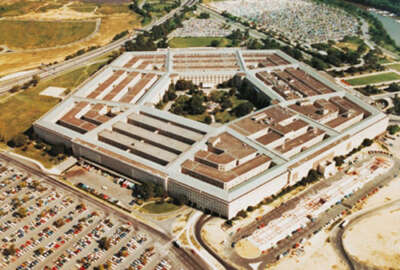
Procurement and facilities hit hard by DoD’s 2017 budget, personnel spending is mostly spared
DoD's 2017 budget includes few changes to pay and benefits, but DoD facilities and procurement take a major hit. The proposal includes an $8.1 billion reduction...
The 2017 budget the Defense Department sent to Congress on Tuesday was $17 billion smaller than the one officials were planning a few months ago. Because of that, several weapons systems were cut back, though cyber spending got a significant plus-up.
After December’s passage of the Bipartisan Budget Agreement, DoD had only about six weeks to shave costs from the 2017 spending plan it had been working on since the previous spring. Mike McCord, the department’s comptroller, said the lion’s share of the cutting during those weeks was to planned procurements of existing weapons systems.
No large programs were cut outright, but a wide array of systems will see smaller purchases next year. In total, the planned procurement budget took a $8.2 billion haircut.
“Modernization took the brunt of the reduction, but I would say it wasn’t in a stupid way,” he said. “We didn’t terminate programs and we didn’t break multi-year contracts. Also on the people side, we didn’t issue reduction in force notices or other kinds of actions that would involve flailing around and breaking things. When you have a two-year budget deal that says you have less money but you don’t know what the future holds, it doesn’t make a lot of sense to try and fundamentally change your force structure. So we went to the modernization account, which tends to be the most volatile anyway.”
Overall, the budget asks for $583 billion, including $59 billion in overseas contingency operations funds.
The top-line figure is roughly $3 billion more than Congress approved for this year, but almost all of the increase would be eaten up by the 1.6 percent pay increase the Obama administration is requesting for service members and civilians, meaning the budget is effectively flat.
The raise is less than the 2.1 percent that would normally be required under current law that pegs military raises to the employment cost index (ECI) that measures pay growth in the private sector.
Lt. Gen. Anthony Ierardi, the director for force structure, resources and assessment on the Joint Staff, said a larger raise had to be sacrificed in favor of more spending on training and other readiness activities. Even with those additions, most of the military services will not regain “full spectrum” readiness until the early 2020s.
“The chairman [of the Joint Chiefs of Staff’s] view is that we need to have a comprehensive and holistic view about the compensation for our force,” he said. “Are our service members trained? Do they have the proper equipment? Are we ready to take on the tasks that we’re assigned? Our military is dedicated and resilient, but it’s also running pretty hard right now.”
On other personnel matters, the Pentagon will once again ask for changes to its TRICARE health insurance program despite having most of its requests rebuffed by Congress for the past several years.
The proposal would introduce new fees of between $700 and $900 per year for working-age military retirees, add new co-pays for Medicare-eligible retirees and consolidate the TRICARE system into two plans: an “HMO-like” TRICARE Select option and a “PPO-like” TRICARE Choice option.
Medical care would remain free of charge for active duty service members, but under the Choice plan, troops’ family members and retirees would be charged co-pays ranging from $15 to $100 when they visit private sector medical providers as a way to encourage them to use military treatment facilities, which cost the department far less.
With regard to retirement, DoD is already seeking changes to the new “blended retirement” plan Congress approved only a few months ago and that’s set to take effect in 2018. The existing reforms would reduce guaranteed military pensions in exchange for government contributions to service members’ Thrift Savings Plan (TSP) accounts.
“We want to increase the force-shaping ability of the services by giving them greater flexibility in how they offer continuation pay,” Ierardi said, speaking about an element of the newly-passed law that adds pay for military members once they’ve served for 12 years.
DoD also wants to postpone the government’s matching contributions to service members’ TSP accounts until they’ve served at least five years, arguing that doing so would increase retention. Current law starts the match at three years of service.
DoD’s proposed changes would bump the department’s maximum TSP matching contribution from 4 percent to 5 percent. Automatic government contribution would stay at 1 percent. Also, the matching contributions would continue until retirement. Under current law, they’ll stop at the 26th year of military service.
As is the case with the broader federal budget, DoD’s share includes an increase in cyber spending — to $6.7 billion in 2017, $1 billion more than in 2016.
The additional funds would be used for a wide array of offensive and defensive cyber activities, including about $100 million to build and secure the new background investigation IT system that DoD will assume responsibility for under reforms the Obama administration announced earlier this month.
The cyber plus-up will also pay for a replacement of DoD’s Host-Based Security System (HBSS), the technology it currently uses to detect malware on individual computers throughout military networks.
Richard Hale, the deputy DoD chief information officer for cybersecurity, said the department needs smarter software that can detect malware code even when hackers modify it just enough to elude today’s scanners.
“One of the things we need to do is at least slow down some of our more sophisticated adversaries,” Hale told the COMDEF Research and Development conference in Arlington, Virginia. earlier Tuesday. “Right now it costs essentially nothing for them to mutate their malware and change the cryptographic hashes so they can defeat the defenses that depend on that kind of static detection capability.”
Hale said the department will change its entire endpoint strategy this year in favor of technologies that can find shapeshifting malware; it will also invest in software that can automate many of the day-to-day tasks that are currently performed manually by DoD’s cyber defenders.
“That’s going to let our people focus more on zero-day threats, for instance, and other activities by sophisticated adversaries,” he said. “There are entire office buildings full of people who are attacking us every day. We need to be able to better characterize where those buildings are, what tools they’re comfortable with using so we can do a better job of countering them.”
The budget would also fully fund the 133 offensive, defensive and support teams U.S. Cyber Command is building as part of the Cyber Mission Force DoD began building four years ago and to finish construction on CYBERCOM’s new Joint Operations Center at Fort Meade. It’s expected to be up and running by 2018.
With regard to facilities, the budget renews DoD’s so-far futile requests for another round of base realignments and closures (BRAC). The latest proposal asks for a BRAC round in 2019, which the department claims would save $2 billion per year by 2025. If Congress declines yet again, the Obama administration’s broader budget request says the executive branch will “pursue new options to reduce wasteful spending on surplus infrastructure.”
And in addition to weapons systems, infrastructure spending took a large hit in the last several weeks of the spending proposal’s crafting. Previously-planned military construction was sliced by $1.1 billion to a final total of $6.1 billion.
Maintenance and upkeep on existing facilities would also suffer a severe toll. The military departments have already neglected repairs on their bases for several consecutive years. Last year, DoD only requested 80 percent of the dollars it needed to keep its facilities in good condition.
That will drop even further in this year’s budget, said Maj. Gen. Thomas Horlander, the Army’s budget director.
“Unfortunately, we could only afford to fund about 67 percent of our facility sustainment requirements,” he said. “This is a consistent funding level across the entire Department of Defense, and it’s an area of risk for the Army. It will only exacerbate the amount of backlogged maintenance that already exists on our facilities.”
Copyright © 2024 Federal News Network. All rights reserved. This website is not intended for users located within the European Economic Area.
Jared Serbu is deputy editor of Federal News Network and reports on the Defense Department’s contracting, legislative, workforce and IT issues.
Follow @jserbuWFED





